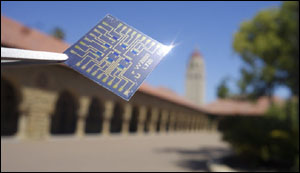Stanford researchers’ artificial synapse is fast, efficient and durable
29. 4. 2019 | Stanford University | www.stanford.edu
The brain’s capacity for simultaneously learning and memorizing large amounts of information while requiring little energy has inspired an entire field to pursue brain-like – or neuromorphic – computers. Researchers at Stanford University and Sandia National Laboratories previously developed one portion of such a computer: a device that acts as an artificial synapse, mimicking the way neurons communicate in the brain.
In a paper published online by the journal Science, the team reports that a prototype array of nine of these devices performed even better than expected in processing speed, energy efficiency, reproducibility and durability. Looking forward, the team members want to combine their artificial synapse with traditional electronics, which they hope could be a step toward supporting artificially intelligent learning on small devices.

The team’s artificial synapse is similar to a battery, modified so that the researchers can dial up or down the flow of electricity between the two terminals. That flow of electricity emulates how learning is wired in the brain. This is an especially efficient design because data processing and memory storage happen in one action, rather than a more traditional computer system where the data is processed first and then later moved to storage.
Read more at Stanford University
Image Credit: Armantas Melianas a Scott Keene
-jk-




